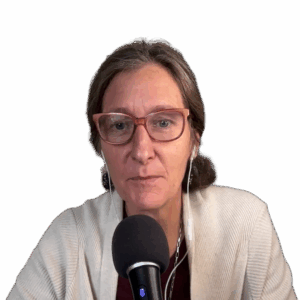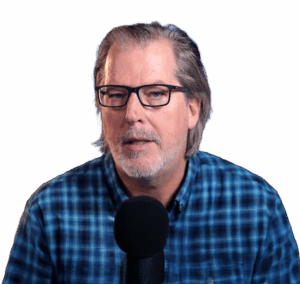
Show Summary
Although artificial intelligence tends to dominate conversations about solving our most daunting global challenges, we may actually find some of the most potent ideas hiding in plain sight in the natural world around us.
In this episode, Nate is joined by Janine Benyus, who has spent decades advocating for biomimicry – a design principle that seeks to emulate nature’s models, systems, and elements to solve complex human problems in ways that are sustainable and holistic.
What would our social and technological innovations look like if we started from the foundational requirement that they create conditions conducive to life? In what ways has biomimicry been inspiring projects for the last few decades, revolutionizing everything from energy production to food storage? How can we take biomimicry to a deeper level, changing the way we design and build to be attuned with local habitats and ‘return the favor’ to nature – helping foster cleaner and more resilient ecosystems?
About Janine Benyus
Janine Benyus is a biologist, innovation consultant, and author of six books, including Biomimicry: Innovation Inspired by Nature, in which she popularized an emerging discipline that emulates nature’s designs and processes to create a healthier, more sustainable planet.
In 1998, Janine co-founded Biomimicry 3.8, the world’s leading nature-inspired innovation and training firm, bringing nature’s sustainable designs to 250+ clients including General Electric, Google, Herman Miller, Levi’s, and Microsoft.
In 2006, Janine co-founded The Biomimicry Institute, a non-profit that empowers people to create nature-inspired solutions for a healthy planet. The Biomimicry Institute runs annual Design Challenges, a Global Network of tens of thousands of educators and entrepreneurs, and AskNature.org, the award-winning bio-inspiration site for inventors.
In French, we have a motto that says that a simple drawing is often better than a long explanation. Jean-Marc Jancovici Carbone 4 President
That’s very understandable because with left atmosphere thinking, one of the problems is that you see everything as a series of problems that must have solutions. Iain McGilchrist Neuroscientist and Philosopher
We can’t have hundreds and hundreds of real relationships that are healthy because that requires time and effort and full attention and awareness of being in real relationship and conversation with the other human. Nate Hagens Director of ISEOF
This is the crux of the whole problem. Individual parts of nature are more valuable than the biocomplexity of nature. Thomas Crowther Founder Restor
Show Notes & Links to Learn More
Download transcript00:00 – Janine Benyus works + info, Biomimicry Institute, Biomimicry 3.8
07:43 – Janine Benyus’ Ted Talk
09:19 – Leonardo Davinci and biomimicry
11:02 – Lee Dugatkin
13:46 – Snow shoes are modeled off snowshoe hares
14:40 – AI is based on neural networks of the brain
15:08 – Neuromorphic AI
15:19 – Nate on Artificial Intelligence
16:12 – Defense using penguins as a model for torpedos
17:17 – Life’s principles
17:51 – Small subset of elements used in nature
21:01 – Green Pod Labs, Deepak Rajmohan
21:42 – Food waste problem
21:54 – India is the second largest food producer in the world, 40% of food wasted
22:20 – Plant compounds preventing spoilage
25:07 – Ecological Overshoot
31:38 – Wind turbines modeled on humpback whale scalloped fins
33:55 – Donella Meadows
36:28 – Biology in social design
37:09 – Anthropocene
39:07 – Biomimicry classes
40:12 – Carbon dioxide as a building block for life
40:46 – Biochar
41:45 – Circular Economy, Industrial Ecology
43:36 – Decomposers
45:22 – Increase in storms, travel and shipping disturbances
50:48 – Ray of Hope Accelerator, Portfolio of start-ups
52:24 – Carbon Pulse
55:32 – Shelf stable medical products based on sea monkeys
56:11 – Tardigrades
56:41 – Trehalose
57:01 – Vaccines without refrigeration
58:08 – Organisms that eat plastic polymers
1:00:39 – Jevons Paradox
1:01:39 – Development of just-in-time supply chains
1:02:09 – Aza Raskin + TGS Episode, Infinite Scroll
1:10:42 – Ecosystem services
1:14:14 – Nature based solutions
1:14:28 – Regenerative agriculture
1:15:15 – Rotational grazing, mimicking buffalo grazing
1:17:19 – Ecosystem Intelligence Software, Microsoft and Biomimicry
1:18:07 – Ask Nature
1:19:41 – A large portion of US cities are backyards
1:20:39 – No Mow May
1:25:27 – Local food movement







